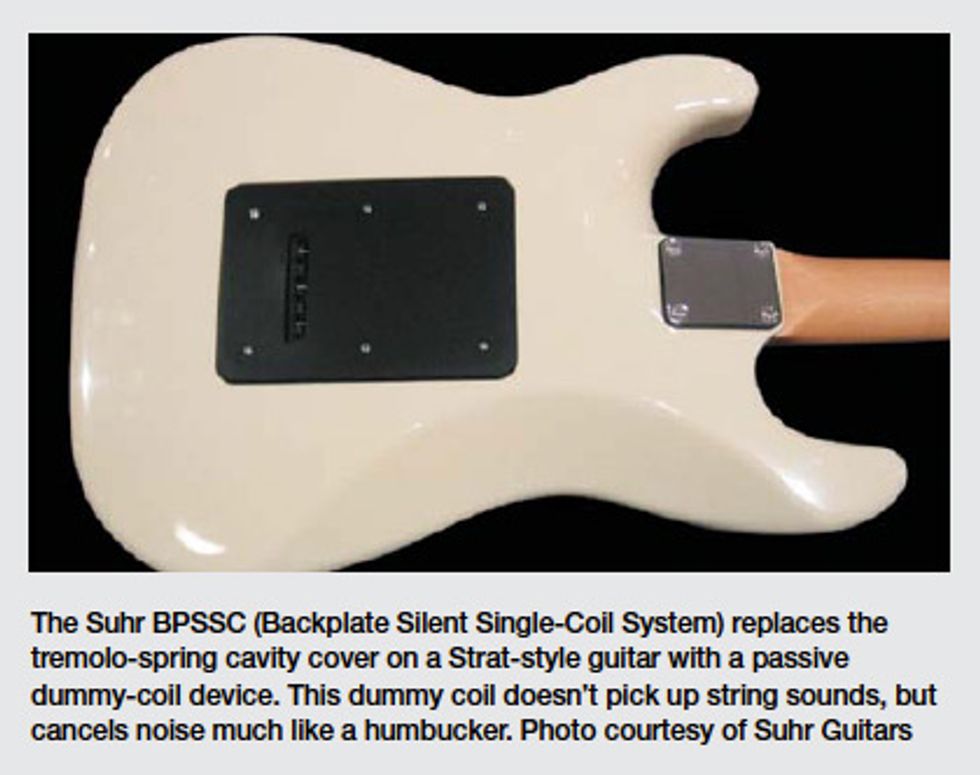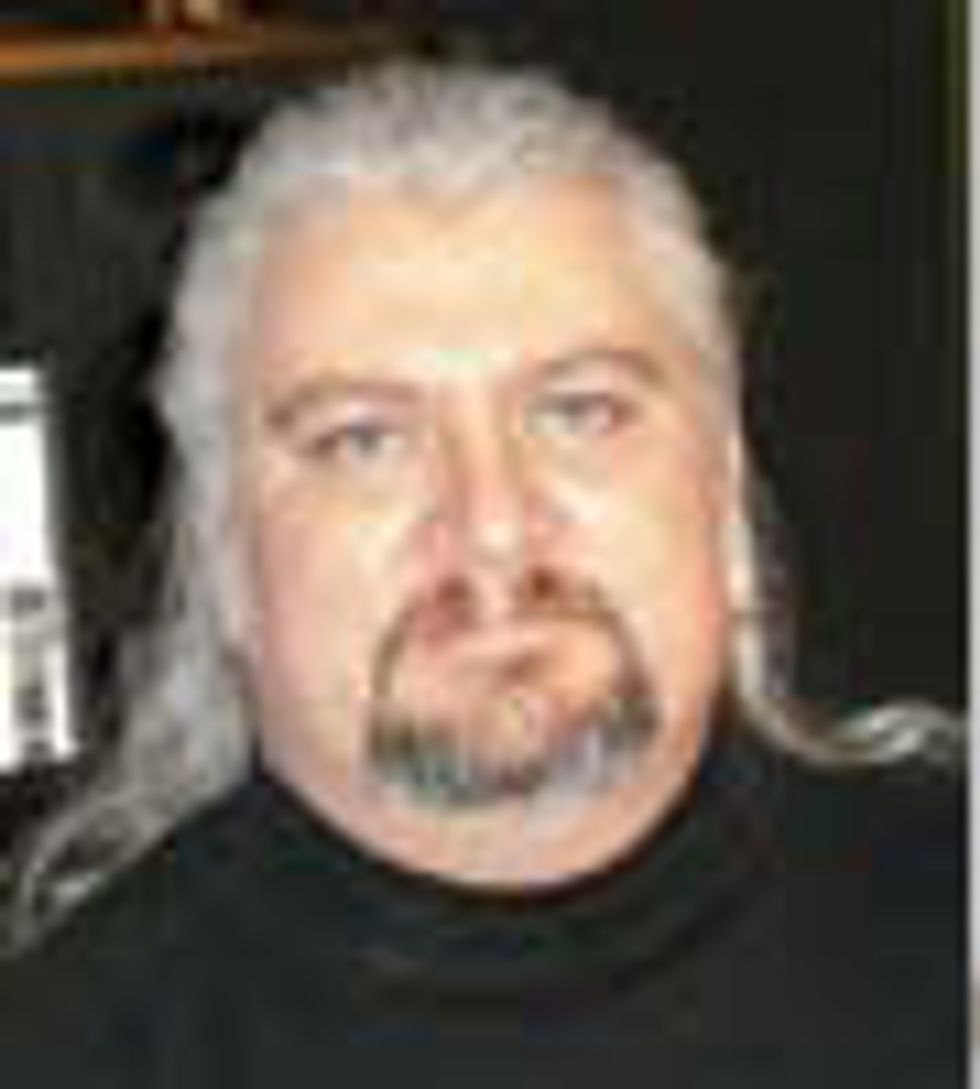The electric guitar can be
a noisy beast. I’m not
talking about the amount of
musical volume it can generate
(we generally don’t refer to that
as “noise,” though innocent
neighbors and long-suffering
family members may disagree).
I’m talking about the unwanted
variety of noise that can accompany
an electric guitar—buzz,
hum, hiss, radio stations, and
more—all picked up by the
guitar’s pickups, its wiring,
or something else in its signal
chain. Onstage, that background
noise can be an annoyance,
but in many cases you can
deal with it by simply ignoring
it. However, in a recording
situation, where every track is
under microscopic scrutiny, any
amount of noise can be noticeable
and problematic. Let’s look
at ways we can reduce or eliminate
the noise.

Let’s begin at the source: the guitar itself. There are several ways that noise—EMI (electromagnetic interference) and RF (radio frequency) noise carried through the air—can get into an electric guitar rig’s circuits. Any noise picked up will be amplified right along with the desirable sounds. And, the higher the gain, the more the signal and noise are amplified, and the louder the noise will seem.
Problem: The coils of wire used in a guitar pickup essentially function as antennae, picking up radio waves and other types of interference in the air.
Solutions: A humbucking pickup is the obvious solution, whether it’s a traditional side-by-side or stacked singlecoil design. Another solution is to equip your guitar with active pickups. But if your tone depends on a traditional singlecoil— whether Fender-style or P-90 (in my opinion, the latter is noisier than the former)— then neither of those solutions will work for you. In this case, you might consider installing a dummy coil. The dummy coil doesn’t pick up sound from the strings, rather it picks up the same unwanted noise picked up by the regular pickups and cancels it out. Suhr is one manufacturer that offers a dummy-coil solution (the BPSSC).
Another solution is a noise-suppressing device. One I’ve heard work well with singlecoils is the Electro-Harmonix HumDebugger. I won’t claim it is artifact-free when operating, but it does a decent job of fighting single-coil and P-90 hum.
In some cases, you may be able to control the amount of noise you’re amplifying by simply changing the direction your guitar is facing—it all depends on where the noise is radiating from.
Problem: Like pickup coils, the other electronics in your guitar can also pick up airborne noise and send it along to the amplifier.
Solution: Shield the guitar to prevent noise from getting in. This entails wrapping the pickup and control cavities with metal foil or conductive tape and grounding it. Shielding can get a bad rap, as some players feel it changes the tone of the guitar. However, if shielding is done properly, it will not affect tone. If it isn’t, it can function as a capacitor that sucks off top end.
Problem: You! We’ve all experienced how the noise a guitar produces drops dramatically as soon as you firmly make contact with the strings. This is because the strings are grounded to the amplifier. Most players assume that when you touch the strings, you ground the guitar. But this is backward—your body functions as an antenna, picking up noise. When you touch the strings (assuming the strings are grounded internally), the noise from your body is dumped to ground.
Problem: Noisy pedals or noise resulting from the huge amount of amplification provided by overdrive, fuzz, and distortion pedals.
Solutions: Using the tips above, kill the noise before it enters the pedal. If there’s no noise going into the pedal, a cleaner signal will come out. However, gain pedals—especially fuzzes and high-gain overdrives— can also generate their own noise. In this case, you need a noise suppressor after your gain pedals. There are two types of suppressors: a gate and a noise reducer. Gates work like a door that slams shut when no desired signal is present, cutting off the noise. Noise reduction systems pull down the level of the noise using various electronic techniques.
Gates can be tighter, but if they’re not set correctly, decaying notes or quiet sounds you want to hear may get chopped off. Noise-reduction devices work best when the noise is “steady-state” or constant. The Rocktron Guitar Silencer and the Rocktron HUSH systems are two popular examples of noise-reduction units. Another affordable but effective solution is the Boss NS-2 Noise Suppressor stompbox.
Problem: Noisy amp— either the amp is picking up noise or its internal circuits are making noise of their own. One quick way to find out is to turn the amp on and crank it up with nothing plugged into its input. If you don’t hear any noise, then the source is something plugged into the amp. If you hear noise with nothing plugged in, then the amp itself is the noise generator.
Solution: If the amp is making its own noise, there may not be a lot you can do other than look for noisy components—such as a bad tube—or see if moving the amp or reorienting it helps.
Your assignment for this month is to go through your rig and assess its noise level under different conditions. Once you know where the noise is coming from, you can take steps to control or remove it.
Next time around, we’ll look at ways to deal with noise after the fact—after you’ve already made a recording, but you discover that there is a noise problem in your tracks.
 Mitch Gallagher is
the former editor in chief of
EQ magazine. He’s written
more than 1000 articles
and six books on recording
and music technology, and
has released an instructional
DVD on mastering. His upcoming book is
entitled Guitar Tone: Pursuing the Ultimate
Electric Guitar Sound. To learn more, visit
mitchgallagher.com.
Mitch Gallagher is
the former editor in chief of
EQ magazine. He’s written
more than 1000 articles
and six books on recording
and music technology, and
has released an instructional
DVD on mastering. His upcoming book is
entitled Guitar Tone: Pursuing the Ultimate
Electric Guitar Sound. To learn more, visit
mitchgallagher.com.






![Rig Rundown: Russian Circles’ Mike Sullivan [2025]](https://www.premierguitar.com/media-library/youtube.jpg?id=62303631&width=1245&height=700&quality=70&coordinates=0%2C0%2C0%2C0)

















